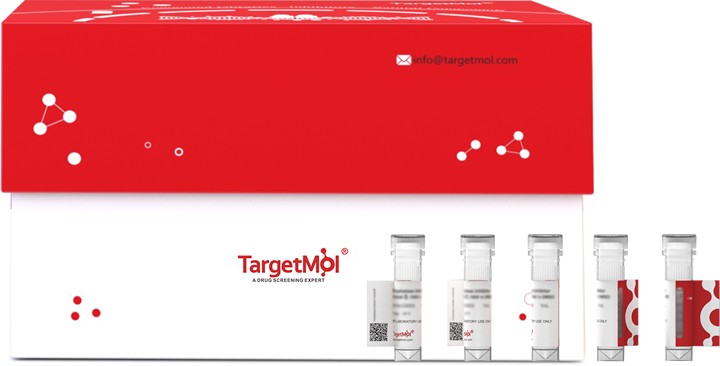- Remove All
 Your shopping cart is currently empty
Your shopping cart is currently empty
Rad6/UBE2A Protein, Human, Recombinant (His)
Ubiquitin-conjugating enzyme E2 A (also known as HHR6A or UBE2A), encoded by human DNA repair genes HHR6A, belongs to the ubiquitin-conjugating enzymes (E2 enzymes) family and is likely to be involved in postreplication repair and induced mutagenesis. UBE2A is described as a CDK2 substrate. It is the human homologue of the product of the Saccharomyces cerevisiae RAD6 / UBC2 gene, a member of the family of ubiquitin-conjugating enzymes. In vivo, HHR6A phosphorylation peaks during the G2/M phase of cell cycle transition, with a concomitant increase in histone H2B ubiquitylation. Mutation of Ser120 to threonine or alanine abolished UBE2A activity, while mutation to aspartate to mimic phosphorylated serine increased UBE2A activity 3-fold. A mutation of UBE2A is considered as the cause of a novel X-linked mental retardation (XLMR) syndrome that affects three males in a two-generation family.

Rad6/UBE2A Protein, Human, Recombinant (His)
| Pack Size | Price | Availability | Quantity |
|---|---|---|---|
| 100 μg | $498 | 7-10 days |
Product Information
| Biological Activity | Activity testing is in progress. It is theoretically active, but we cannot guarantee it. If you require protein activity, we recommend choosing the eukaryotic expression version first. |
| Description | Ubiquitin-conjugating enzyme E2 A (also known as HHR6A or UBE2A), encoded by human DNA repair genes HHR6A, belongs to the ubiquitin-conjugating enzymes (E2 enzymes) family and is likely to be involved in postreplication repair and induced mutagenesis. UBE2A is described as a CDK2 substrate. It is the human homologue of the product of the Saccharomyces cerevisiae RAD6 / UBC2 gene, a member of the family of ubiquitin-conjugating enzymes. In vivo, HHR6A phosphorylation peaks during the G2/M phase of cell cycle transition, with a concomitant increase in histone H2B ubiquitylation. Mutation of Ser120 to threonine or alanine abolished UBE2A activity, while mutation to aspartate to mimic phosphorylated serine increased UBE2A activity 3-fold. A mutation of UBE2A is considered as the cause of a novel X-linked mental retardation (XLMR) syndrome that affects three males in a two-generation family. |
| Species | Human |
| Expression System | E. coli |
| Tag | N-His |
| Accession Number | P49459 |
| Synonyms | ubiquitin-conjugating enzyme E2A,UBC2,RAD6A,MRXSN,MRXS30,HHR6A |
| Construction | A DNA sequence encoding the mature form of human UBE2A (P49459) (Met 1-Cys 152) was expressed, with a polyhistidine tag at the N-terminus. Predicted N terminal: Met 1 |
| Protein Purity | > 80 % as determined by SDS-PAGE |
| Molecular Weight | 19.2 kDa (predicted); 18.5 kDa (reducing conditions) |
| Endotoxin | Please contact us for more information. |
| Formulation | Supplied as sterile PBS, 20% glycerol, pH 7.5. |
| Reconstitution | A Certificate of Analysis (CoA) containing reconstitution instructions is included with the products. Please refer to the CoA for detailed information. |
| Stability & Storage | It is recommended to store the product under sterile conditions at -20°C to -80°C. Samples are stable for up to 12 months. Please avoid multiple freeze-thaw cycles and store products in aliquots. |
| Shipping | Shipping with blue ice. |
| Research Background | Ubiquitin-conjugating enzyme E2 A (also known as HHR6A or UBE2A), encoded by human DNA repair genes HHR6A, belongs to the ubiquitin-conjugating enzymes (E2 enzymes) family and is likely to be involved in postreplication repair and induced mutagenesis. UBE2A is described as a CDK2 substrate. It is the human homologue of the product of the Saccharomyces cerevisiae RAD6 / UBC2 gene, a member of the family of ubiquitin-conjugating enzymes. In vivo, HHR6A phosphorylation peaks during the G2/M phase of cell cycle transition, with a concomitant increase in histone H2B ubiquitylation. Mutation of Ser120 to threonine or alanine abolished UBE2A activity, while mutation to aspartate to mimic phosphorylated serine increased UBE2A activity 3-fold. A mutation of UBE2A is considered as the cause of a novel X-linked mental retardation (XLMR) syndrome that affects three males in a two-generation family. |
Dose Conversion
Sci Citations
Calculator
Tech Support

Copyright © 2015-2025 TargetMol Chemicals Inc. All Rights Reserved.


